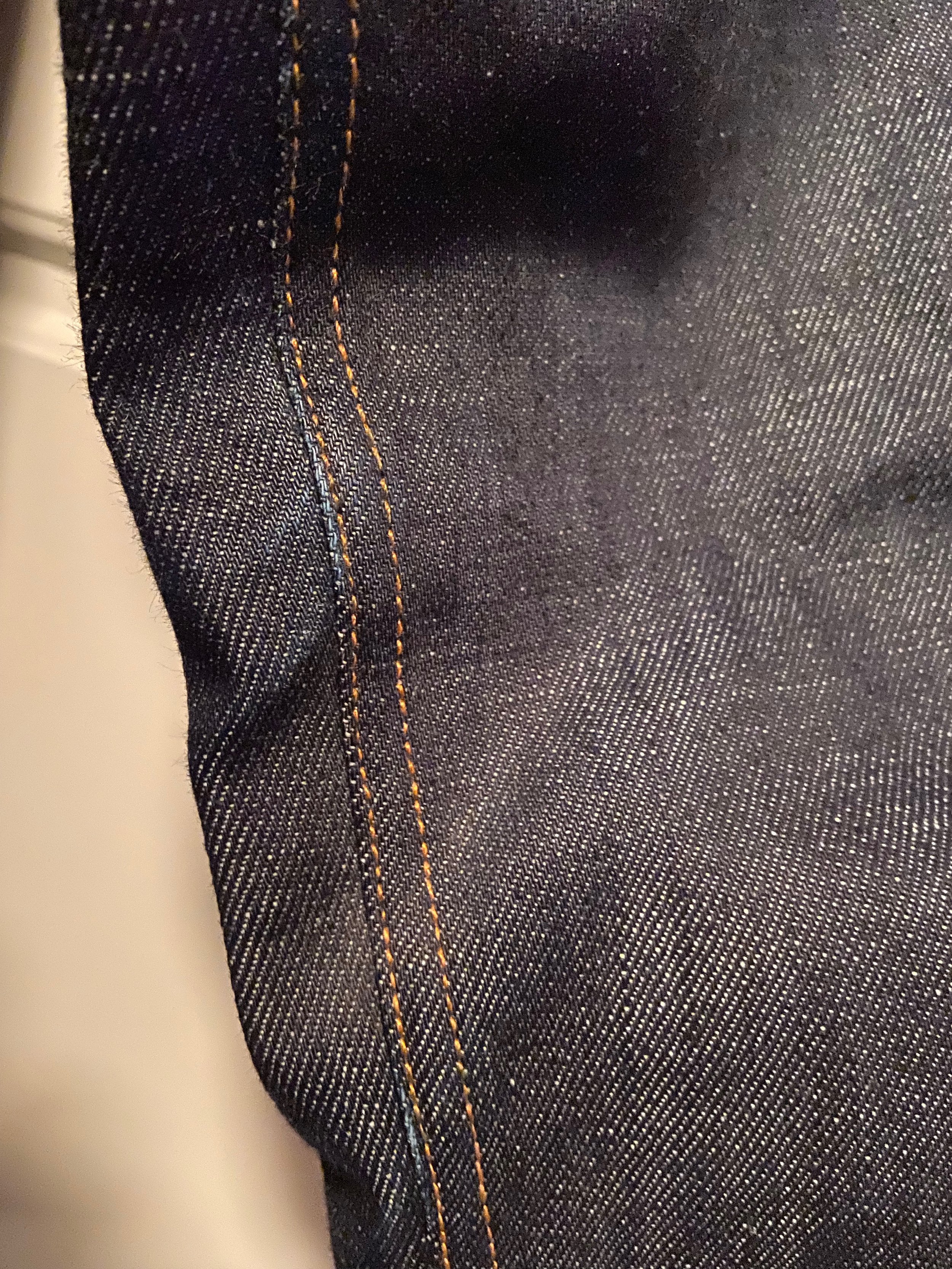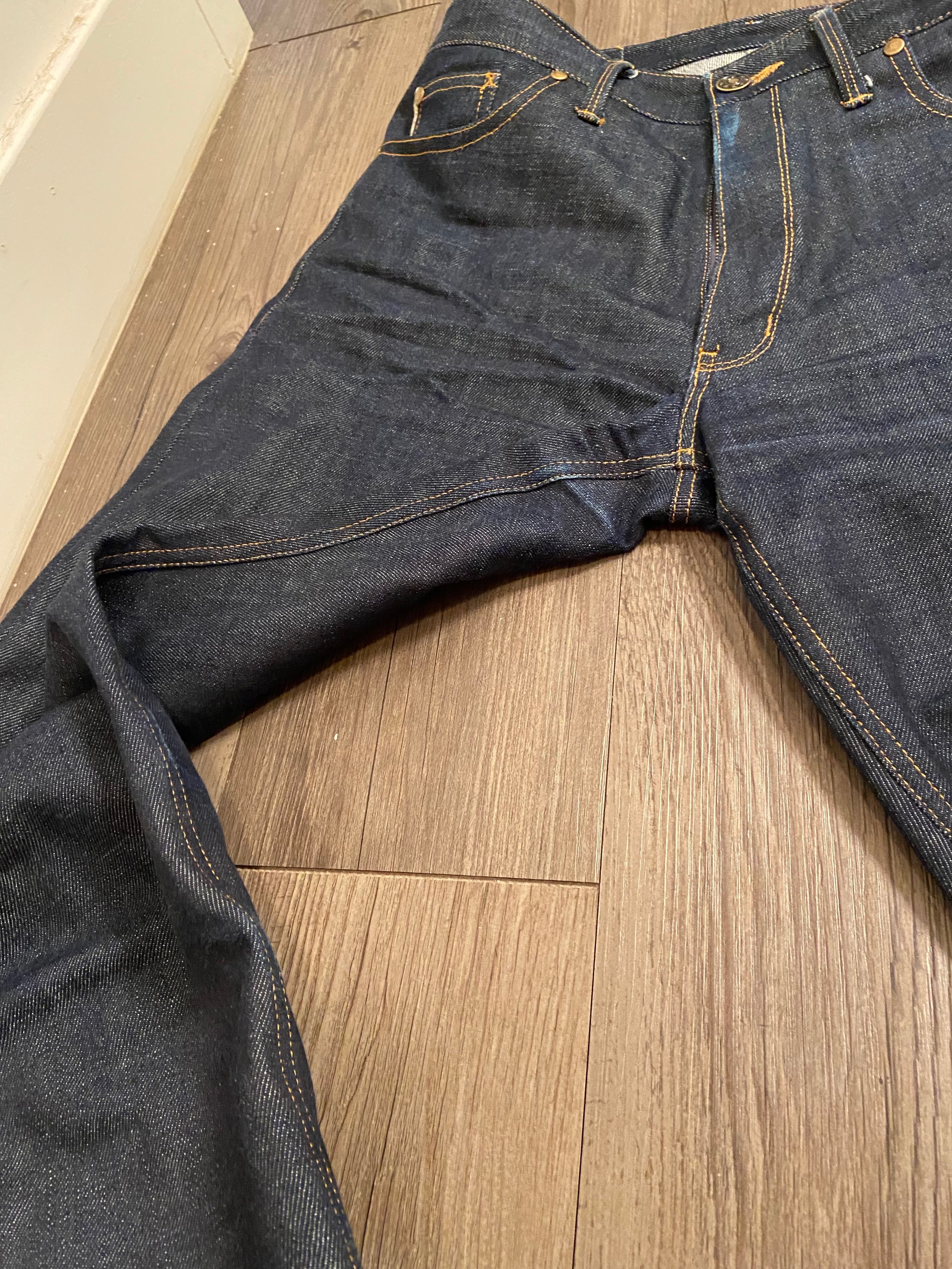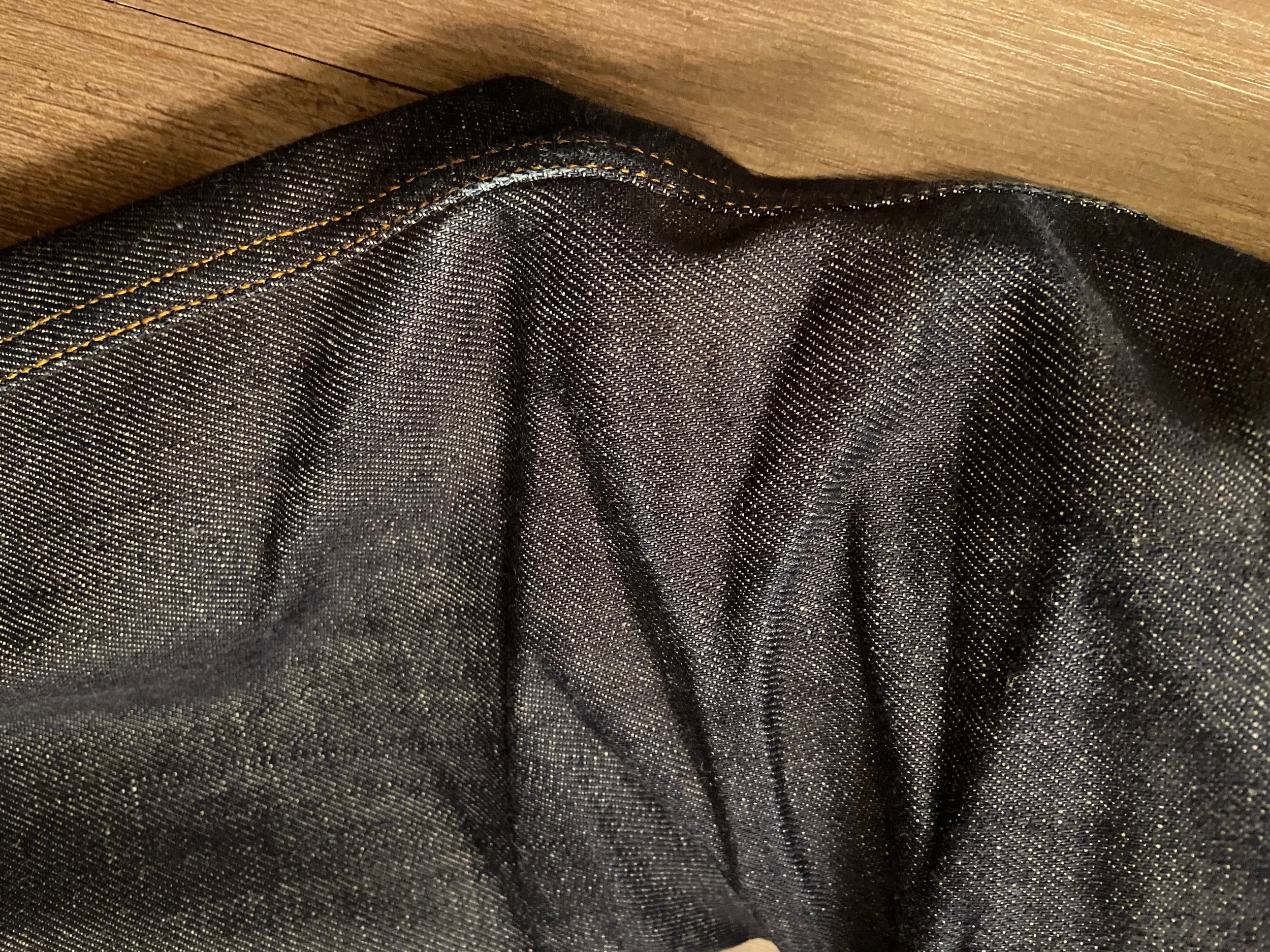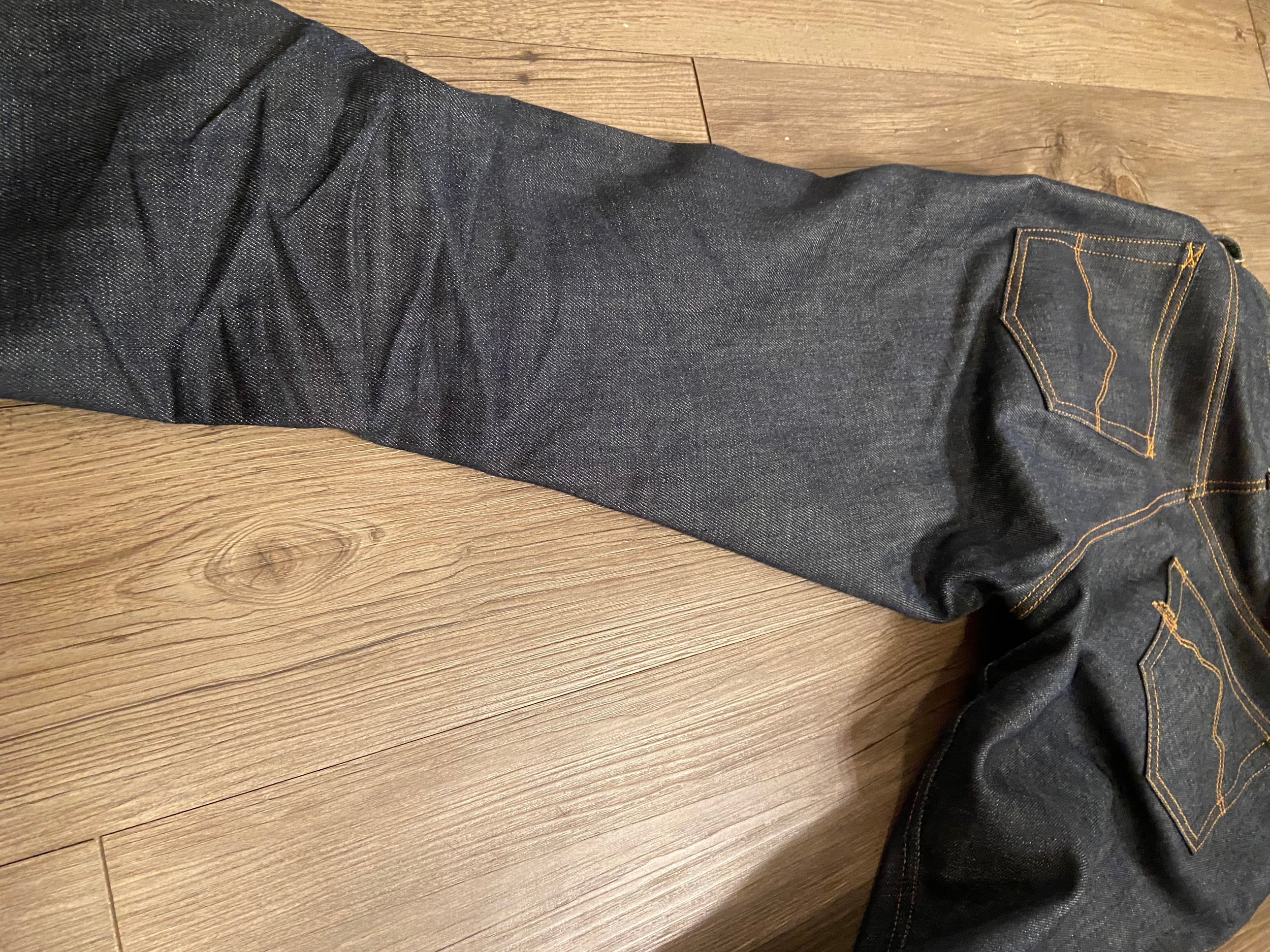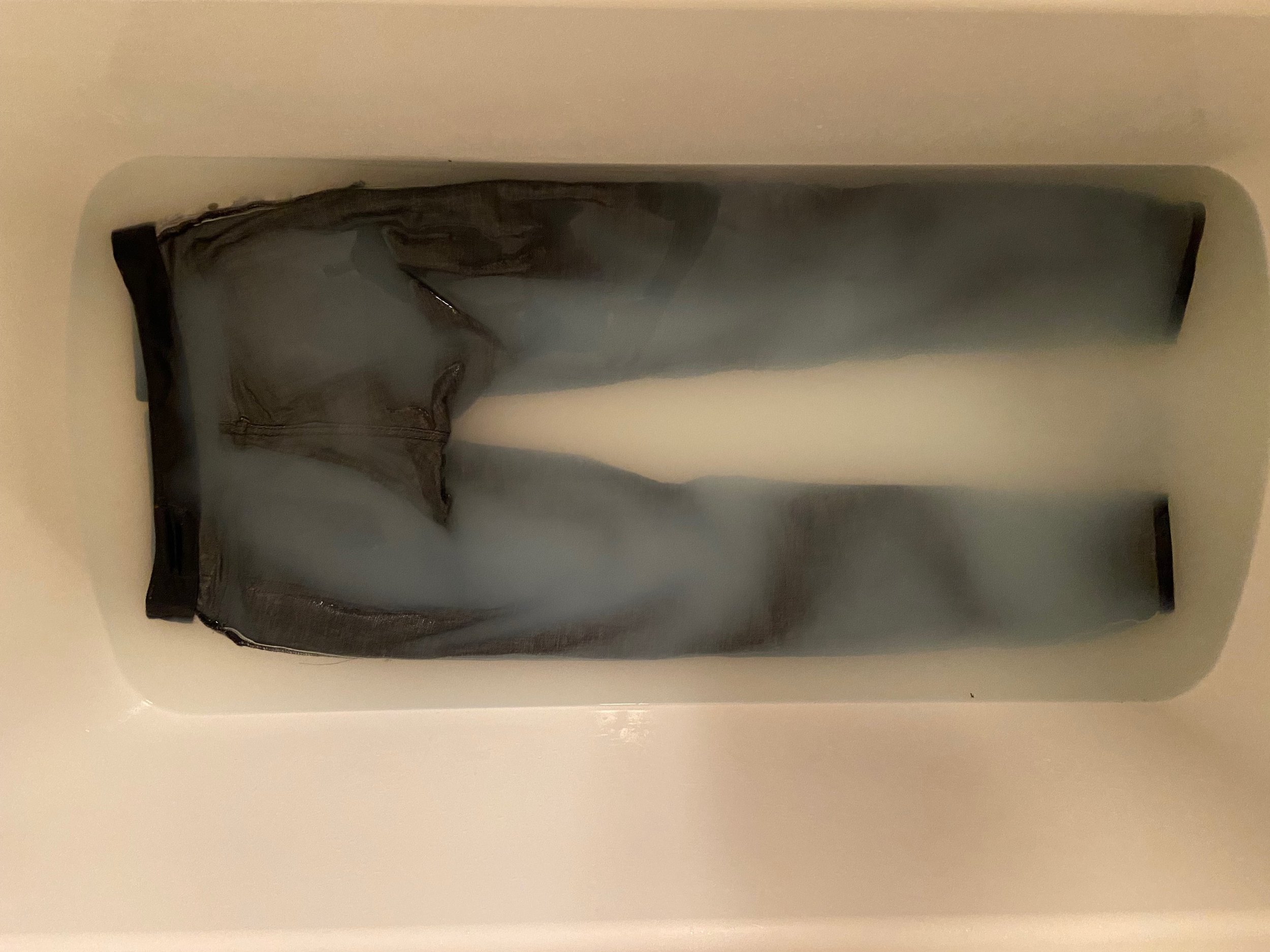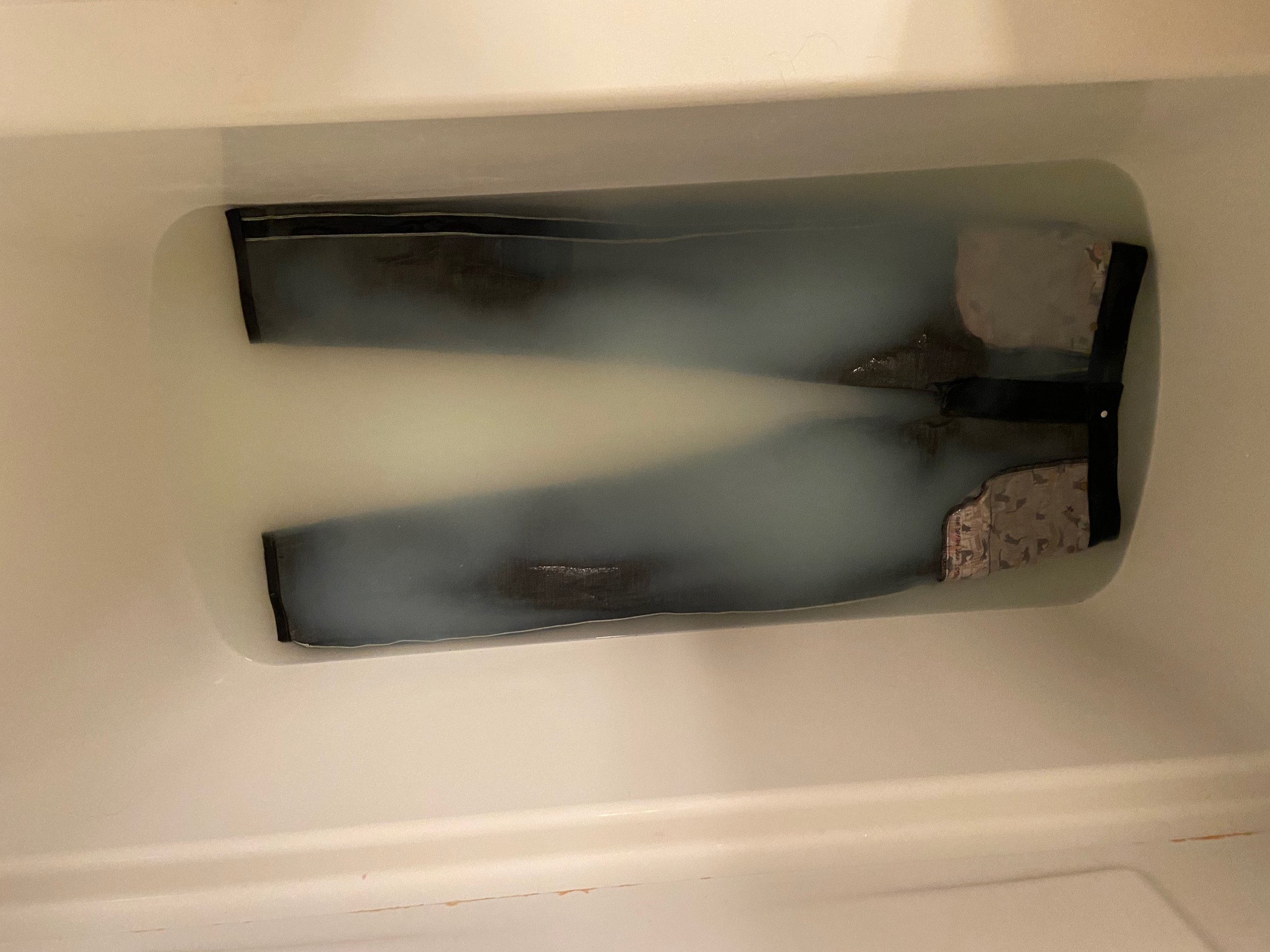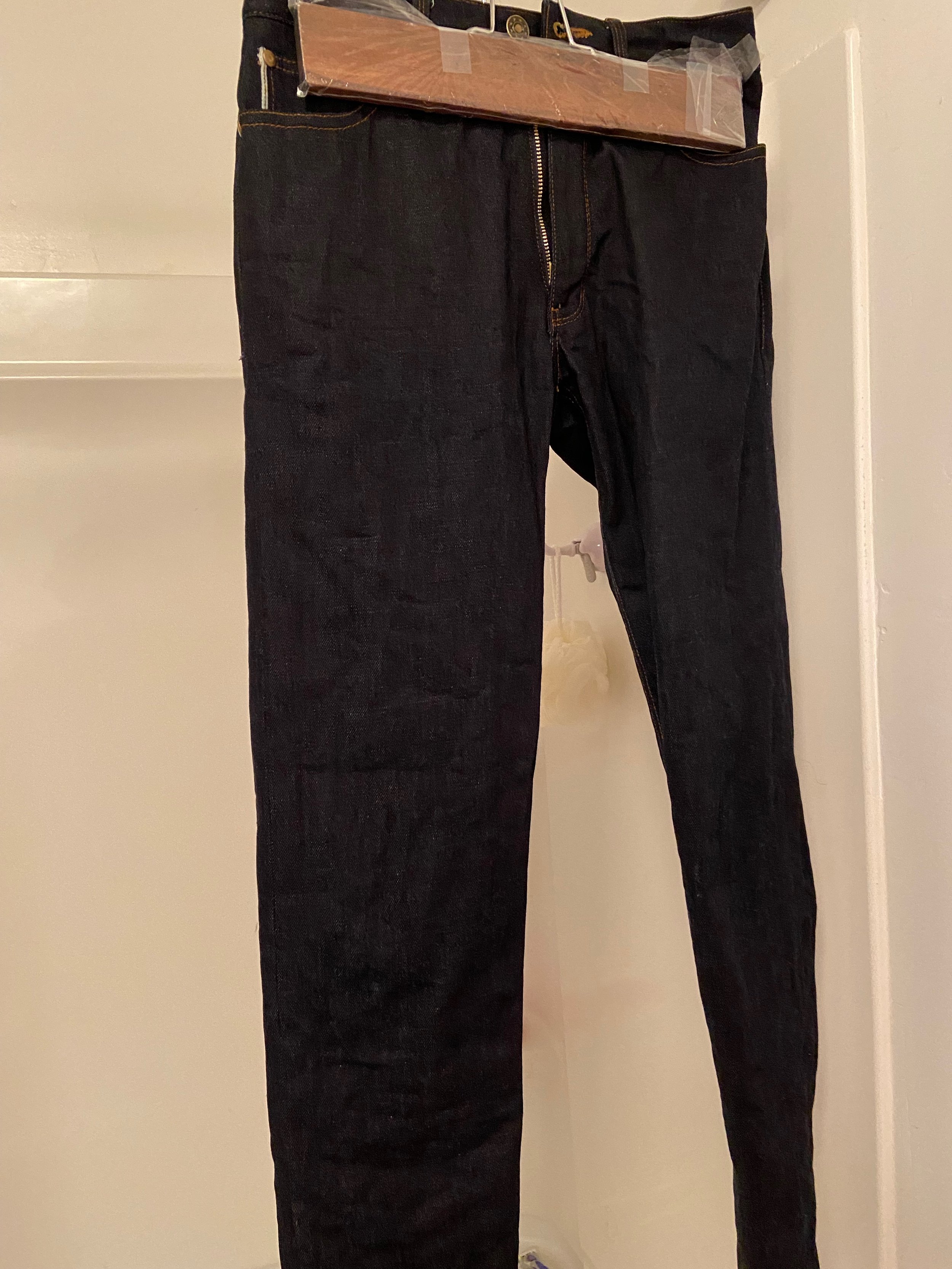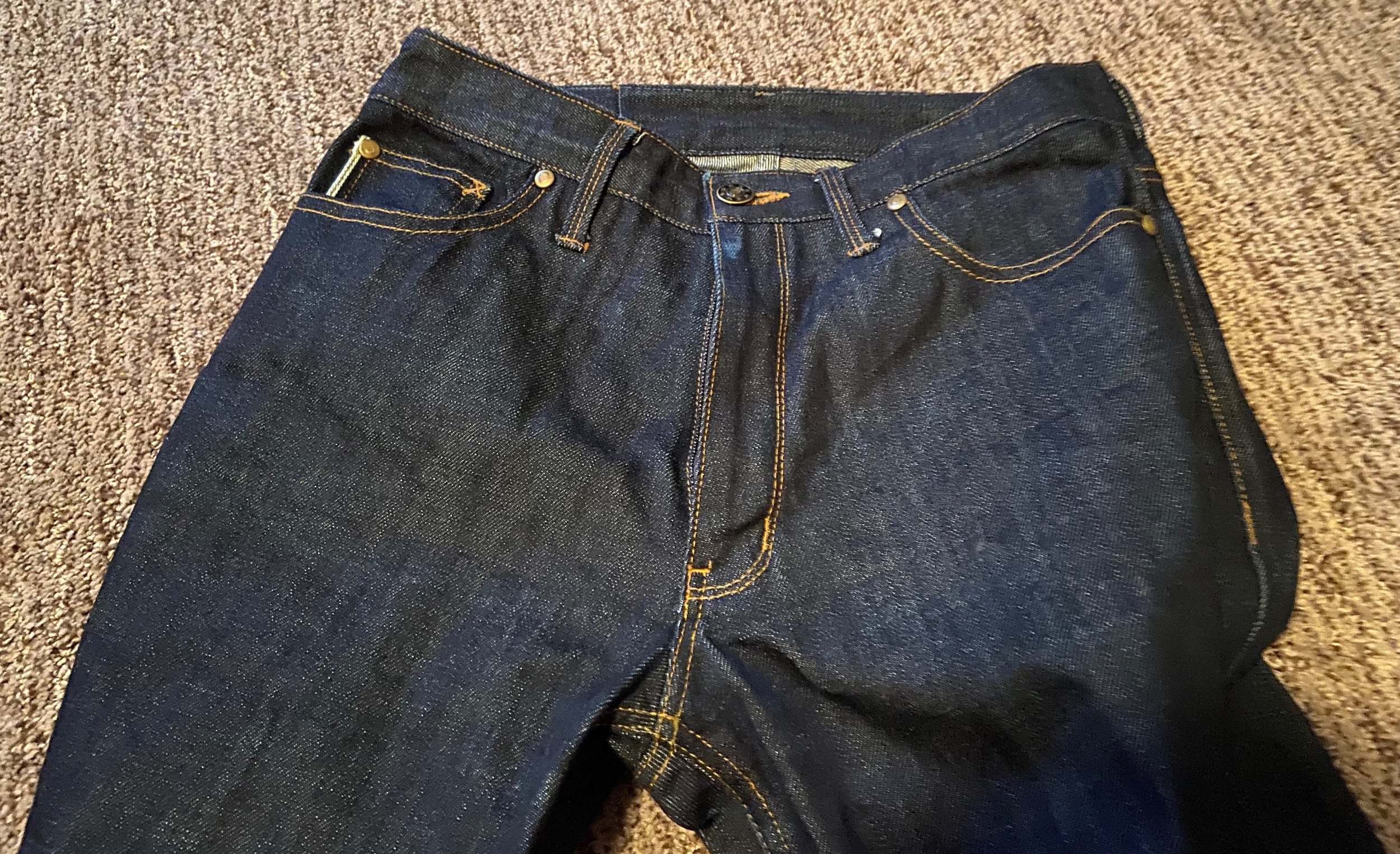Dirty Denim Project 7: Weeks 10-13 and Conclusion
Week 10
December 6, 8, 9, 10
At this point, I decided to change the cuff on my jeans. Instead of a double roll, I switched to just one, deeper than the original. This felt like the most correct length for my jeans, and I didn’t mind the visible crease from the previous roll. The 10th was a snowy day. I tried to capture a picture of the snow on my jeans, but it had melted to water by the time I entered my room at work.
Week 11
December 13, 14, 16, 17
Another week of wearing my jeans. Nothing new to report.
Week 12
December 20, 21, 22, 24, 25
The 21st was day 40. All of the measurements remained the same, except for the inseam with the adjusted cuff (inseam 29” with 3.25” cuff).
On the evening of the 22nd, I folded up my jeans (for the first time), placed them in a plastic bag, and packed them in my suitcase. At the outset of this experiment, I wasn’t sure if I’d be traveling home for the holidays at all, or if so, whether I would bring my jeans. It didn’t seem likely that I would be willing to pack my jeans, nearly 3 months dirty, and I was fine with that. When it came to it, though, it didn’t seem right not to bring my jeans. I would have felt like I was leaving a part of myself behind. I was not at all willing to wear them on the plane, but ended up wearing them for both Christmas Eve and Christmas day. (The dress I packed, in case I felt like being fancy, returned with me unworn.) I forgot to photograph my jeans after taking them off Christmas evening, but that’s OK.
Week 13
December 29, 30
These were the only two days I worked this week, after returning from my travels and before the long New Year’s weekend. I only worked a half day on the 30th, and when I took them off early that afternoon, knowing it was the last time before their first wash, I was a little sad to be cutting the wear that final day short.
It was 45 days total. About halfway through, I set the goal of making it to at least 40, but felt I was behind that goal (in consideration of Thanksgiving, Christmas, and New Year’s holidays). I increased how much I wore them, without any issue, and surprised myself by surpassing this goal by five days.
The First Wash
December 31, 2021
I decided on a delicate hand wash in the tub. This is what the true denim enthusiasts recommend. Washing in the machine can create fade lines based on how they fold and tumble in the machine; these are not desired, as the fade lines from wear on the body are. Initially, the idea of hand washing jeans seemed like a ridiculous hassle, and not something I cared to do, but the fact is, if you are only washing your jeans once every few months, it’s not too much trouble. I’d put so much into them—research, planning, purchasing the exact right denim, patterning, cutting, sewing, writing a blog, tracking each day I wore them, over the course of 3 months, for a total of 45 days—I just had to put as much care into their washing as I could.
I filled the tub with a few inches of lukewarm water. To this I added a splash of vinegar (to aid in killing bacteria) and a splash of Dr. Bronner’s castile soap, citrus orange scent (I found this under my bathroom sink at the time when the pipe was leaking. I think I have had it since before I moved out of my parents’ house 8+ years ago, and it has moved with me every place I have lived since. I plan to make this the year that I finally use it up, and this was my first step.) In preparing to wash my jeans, I unfolded the cuff and discovered the only visibly dirty part of my jeans. Then, I turned them inside out.
I placed them in the tub and spent a few minutes swishing them around, rubbing them to make sure the water soaked in. Then, I set a timer for 45 minutes and let them soak.
After draining the murky, indigo-dyed water, I rinsed my jeans briefly under the tap, filled the tub once more for a few more swishes in pure water, then took them out. I gently rolled them in a towel to squeeze out as much water as I could, turned them right side out, and clipped them in a hanger to let them air dry.
Washing removed the creases that had set in above the front thighs and behind the knees. The overall color is slightly lighter. Rather than making the fades more apparent, from the dye washing out, they looked about the same. It was—almost—disappointing. Although I have never especially liked the look of pre-distressed jeans, with the lines of whiskering artificially applied, I was excited to see what my natural lines of wear would be. Currently: inconclusive; they need more wear, and only time will tell.
Measurements:
Original Day 40 First Wash Current
Waistband 27.5 28.75 27.75 28
Hips 37.5 39.5 38.5 39
Thigh 23 23 22.5 22.5
Knee 16.25 16.25 16 16
Calf 14.5 14.5 14.25 14.25
Ankle 12.5 12.5 12 12.5
Inseam 30 29 31.25 29.25
Cuff 2 3 - 2
Clean Jeans






